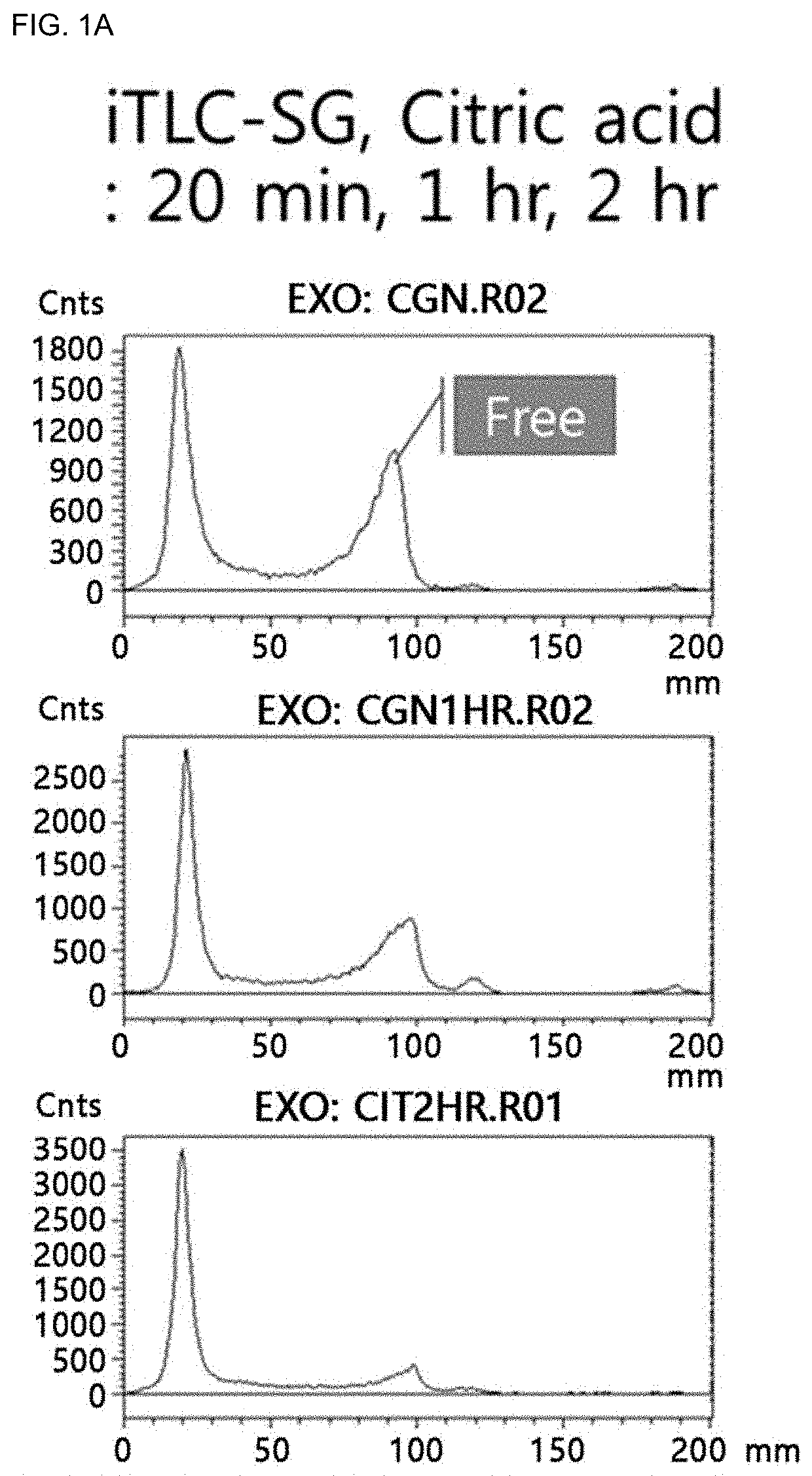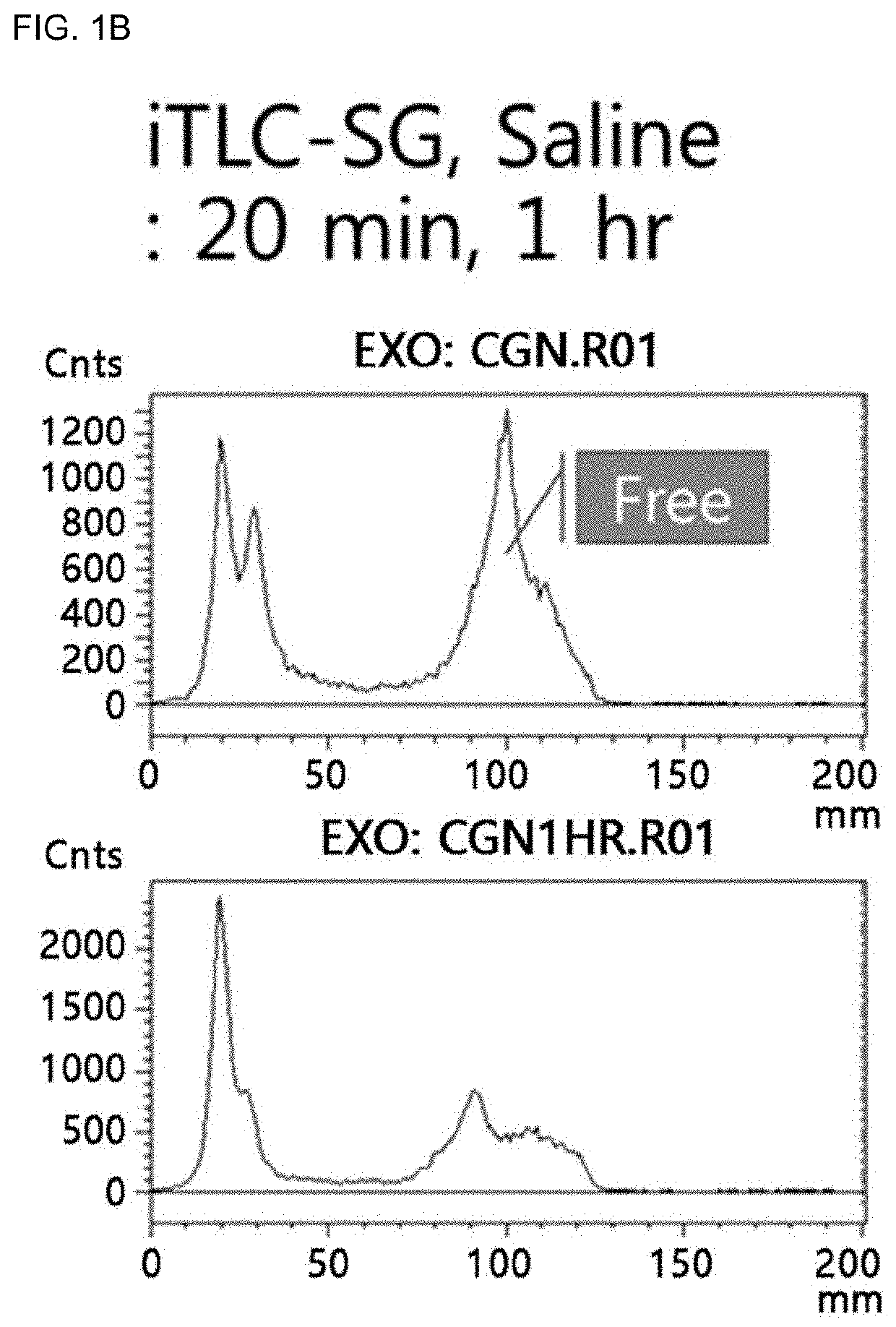Carrageenan derivative, probe for labelling macrophages, and method for preparing same
a carrageenan derivative and labeling technology, applied in the field of probes for labeling macrophages, can solve the problems of limited use, inability to accurately and easily identify m1-type macrophages, and difficulty in repeatedly sacrifice of expensive animal models, etc., to achieve quick and easy detection and labeling, accurately and easily identify m1-type macrophages, and produce easily
- Summary
- Abstract
- Description
- Claims
- Application Information
AI Technical Summary
Benefits of technology
Problems solved by technology
Method used
Image
Examples
preparation example 1
nan Derivative
[0177]
[0178]Reaction Scheme 1 shows a procedure of synthesizing a carrageenan derivative acting as a ligand of CD80 of macrophages by oxidizing, substituting and reducing carrageenan (CGN).
[0179]Prior to synthesis, physical property (solubility) was investigated using a 10 mg / mL CGN solution (in DW). Aggregation was confirmed by dynamic light scattering (DLS).
[0180]Based on the physical property, 10 mL of a 2.5 mg / mL CGN aqueous solution was prepared. 2 mL of the CGN aqueous solution was used for reaction. After adding 0.02 mmol (4.3 mg) of sodium periodate as an oxidizing agent to the CGN aqueous solution, carrageenan-aldehyde was prepared by opening the ring structure of carrageenan by performing oxidation at room temperature for 30 minutes. The carrageenan-aldehyde was filtered with distilled water using a PD-10 column. Then, after adding 0.02 mmol (1.5 mg) of cysteamine to the filtered solution, carrageenan with the aldehyde group of the carrageenan-aldehyde substi...
preparation example 2
nan Derivative from λ-Carrageenan
[0181]
[0182]Reaction Scheme 2 shows a procedure of synthesizing a carrageenan derivative acting as a ligand of CD80 of macrophages by oxidizing, substituting and reducing A-carrageenan. A-Carrageenan is a polymer having three sulfate groups per two sugar units.
[0183]A mixture of NaIO4 (3.9 mg, 0.018 mmol) and H2SO4 (2 μL) was added to 5 mL of the λ-carrageenan solution (7 mg / mL). After stirring the reaction mixture at room temperature for 30 minutes, the reaction mixture was purified using a PD-10 column (Sephadex™ G-25 Medium, GE Healthcare Bio-Sciences Corp, NJ, USA). Carrageenan-aldehyde was prepared by recovering 1 mL of fractions serially 3 times. 2.5 mL of a carrageenan-aldehyde solution was prepared by dissolving the carrageenan-aldehyde in distilled water. Then, 100 molar equivalents excess cysteamine (2.1 mg, 0.018 mmol) was mixed based on the oxidized A-carrageenan contained in the solution. After stirring the mixture at room temperature fo...
preparation example 3
rageenan Derivative
[0184]Unlike the methods for preparing a carrageenan derivative of Preparation Examples 1 and 2, a carrageenan derivative for preparation of a probe for labeling macrophages may be prepared through click reaction.
[0185]A DBCO-carrageenan derivative was synthesized in the same manner as in Preparation Example 1, except that a compound represented by Chemical Formula 3 was added instead of cysteamine.
[0186]In Preparation Example 3, a compound represented by Chemical Formula 3 with o being 1 was used.
PUM
| Property | Measurement | Unit |
|---|---|---|
| molecular weight | aaaaa | aaaaa |
| molecular weight | aaaaa | aaaaa |
| mol % | aaaaa | aaaaa |
Abstract
Description
Claims
Application Information
 Login to View More
Login to View More - R&D
- Intellectual Property
- Life Sciences
- Materials
- Tech Scout
- Unparalleled Data Quality
- Higher Quality Content
- 60% Fewer Hallucinations
Browse by: Latest US Patents, China's latest patents, Technical Efficacy Thesaurus, Application Domain, Technology Topic, Popular Technical Reports.
© 2025 PatSnap. All rights reserved.Legal|Privacy policy|Modern Slavery Act Transparency Statement|Sitemap|About US| Contact US: help@patsnap.com



